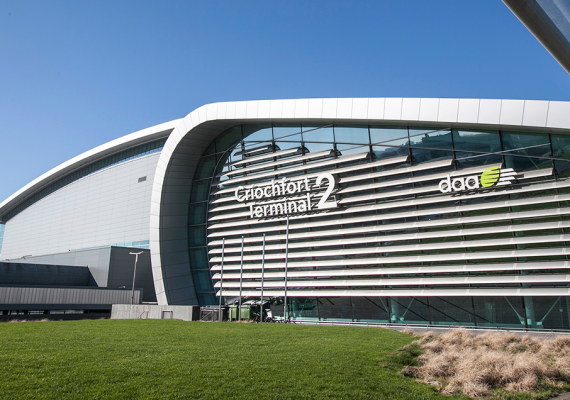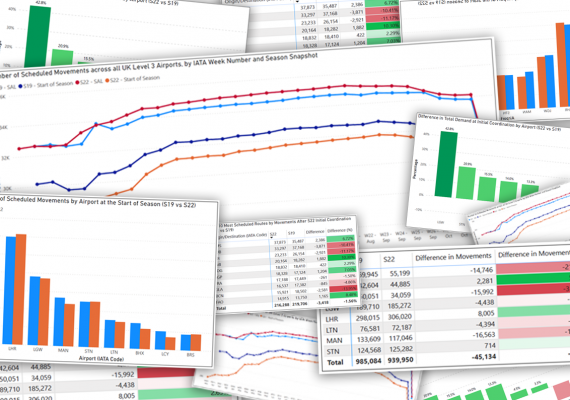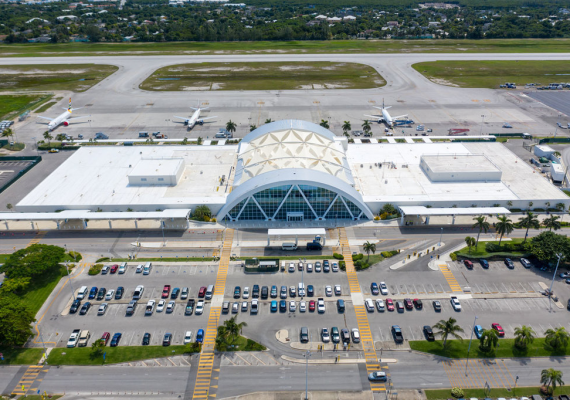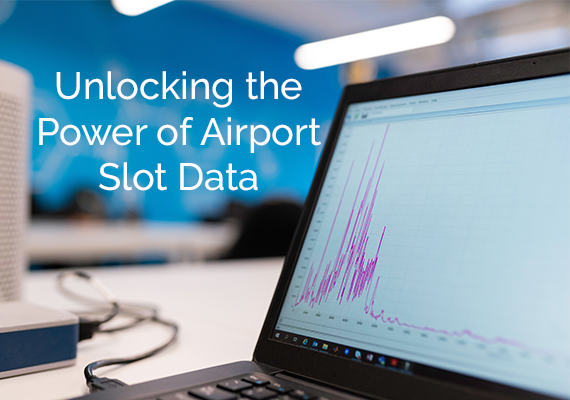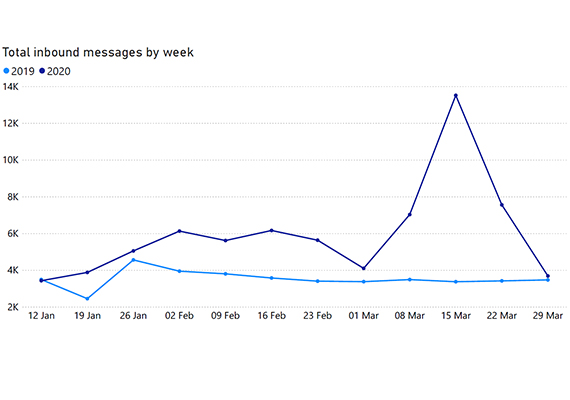As UK and European Airspace become more congested and airports look to squeeze maximum opportunity from their runway, we look at how NATS and ACL are working together through the Industry Resilience Group to better plan for the summer.
Aircraft cannot simply fly in straight lines between two points. The skies above our heads are made up of a mix of controlled, uncontrolled and military airspace. Almost all commercial airliners fly through controlled airspace where Air Traffic Control monitor and control which direction, how fast and at what altitude each flight can fly to keep passengers safe.
The controlled airspace above the United Kingdom is a set of pre-designated corridors that aircraft must follow. It was originally designed in the 1960s and in the main has remain unchanged for 50 years. As the demand for air travel has drastically increased since the 1960s, certain parts of the airspace network above the UK have come under significant pressure and it is at these airspace “hotspots” that the flow of air traffic may have to be regulated by Air Traffic Control leading to delays in flights planning to fly through regulated sectors.
For the Summer 2018 season the Voluntary Industry Resilience Group (VIRG) embarked upon trying to understand from ACL how the Coordination cycle works and if any useful information could be extracted from ACL’s schedules to highlight potential air traffic hotspots in advance. ACL and NATS worked together to create some basic high-level illustrations to show the changes in demand for the main directional flows in and out of the UK airspace versus the previous Summer.
Planning for Summer 2019
ACL’s role in the Summer 2019 process was far more involved, providing detailed schedule data for 26 UK & Republic of Ireland (ROI) airports to be combined with NATS capability at key points in the run up to the start of the season. ACL’s experience provided industry context and understanding to the data, a result of their unique proposition and close relationships with airlines and airports.
Each ACL review was made up of thousands of data entries providing information on the number of flights operating between airports. This, in combination with NATS’ own data allows airspace ‘hot spots’ to be identified ahead of time. Further analysis by week, weekday and time provide extended dimensions to the analysis, allowing NATS and the industry to understand the impact of the new schedule for the upcoming season and plan for expected congestion.
Delivering meaningful output for the industry
The outputs provided for Summer 2019 were significant in allowing the industry to better prepare for a busy summer season. The data showed a 0.4% growth against the previous summer, amounting to an increase of over 6,000 movements. Growth was strongest in the Republic of Ireland (+3.6%), with movements at London airports also higher than the previous summer (+0.5%).
Significantly for NATS, there was strong South-East axis growth (+5.7%) which indicated further congestion expected in an already busy airspace. There was however a decline in traffic on the East axis; knowledge of these trends allowed NATS and the industry to prepare for the specific airspace challenges ahead.
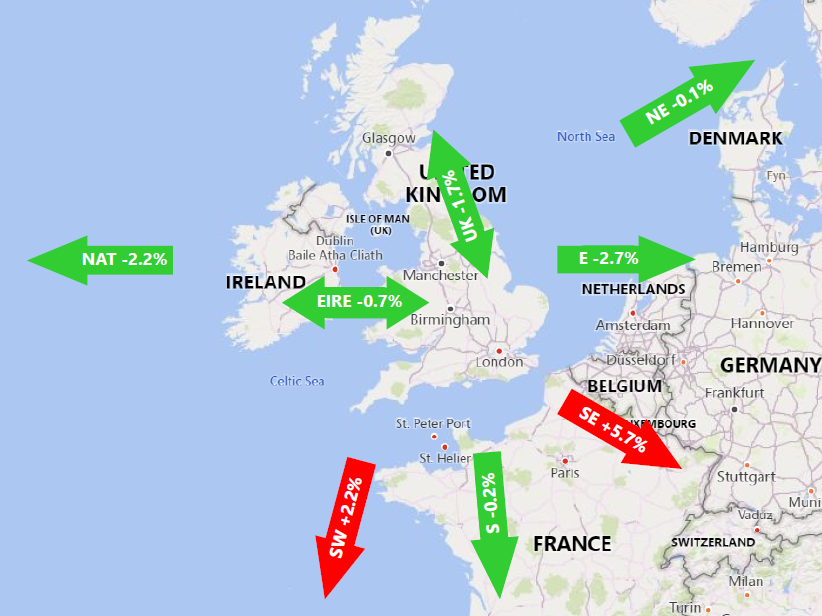
ATC Routing traffic forecast for Summer 2019 as of February 20, 2019.
For Summer 2020, ACL developed its contribution further, providing additional analysis alongside the data and utilising Power BI to make process more efficient, easily understood and dynamic.
Initial Summer 2020 analysis taken at the end of November showed movement growth of 0.7%. Expected growth for 2020 was driven primarily by the rise in scheduled flights with a South-East routing which increased by over 23,000 movements. Growth on the South-East axis has been a historic issue, and so advance warning for the upcoming summer allows the industry to react to the demand.
The picture has changed significantly at the second data iteration. Data updates now show a movement decline of -1.1% against the previous summer, demonstrating how regular provision of schedule data is essential due to the volatility of schedule changes that can occur.
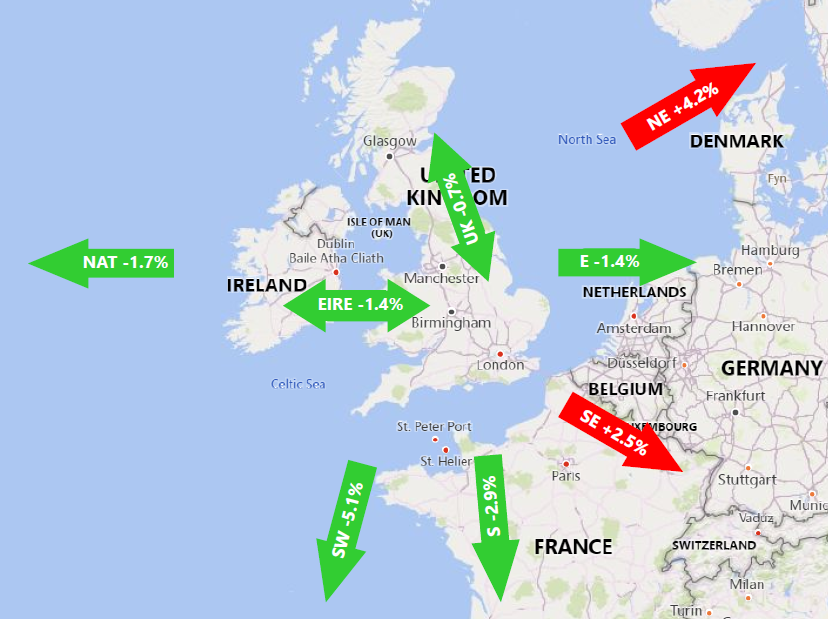
ATC Routing traffic forecast for Summer 2020 as of February 3, 2020.
Growth on the South-East axis has now decreased to only +2.5%, with more significant growth on the NE axis (+4.2%). In addition to observing overall movements and axis growth, ACL provide information at a regional and airport level. This analysis shows decline in movements in all major UK and Ireland regions, except for growth in Scotland (3.9%). An area of specific airspace interest is London airports, which currently show an overall decline in movements of -0.2% versus last summer.
Changes between data updates underline the significance of schedule movements between initial allocation and the start of the season. As such, the ability to provide iterative updates using dynamic Power BI reporting allows NATS to have better visibility of schedule changes and to observe how trends are developing ahead of the start of the season.
A developing collaboration
Analysis of forecasting accuracy for Summer 2019 indicated that the quality of predictions improved as ACL provided later data iterations, showing the importance of the continued information provided up to the start of the season.
NATS were able to utilise a far more accurate data picture as a result of the final data iteration. Looking forward to Summer 2020, it was agreed that due to the increasing accuracy of later iterations, NATS and ACL would focus on high-level trends at the first iteration, building into a more detailed picture following slot return deadlines prior to the season starting.
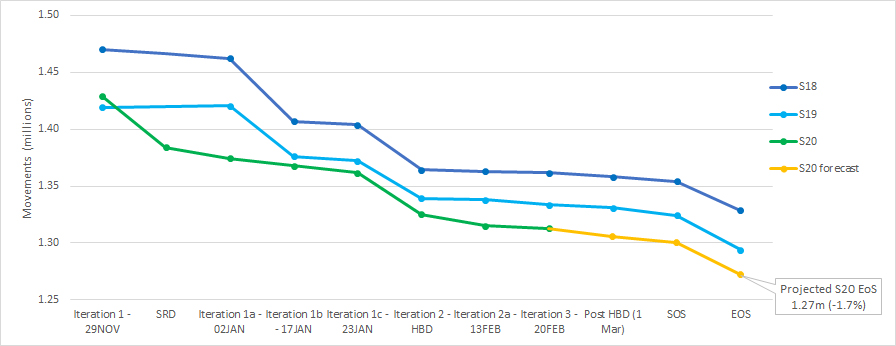
Several further data iterations and trend updates will be provided to NATS and the IRG up to and including the start of the summer season, with the intention of allowing the industry to continue to improve its resilience against schedule changes and airspace congestion by utilising ACL’s unique resources.
Looking ahead
As ACL and NATS continue to collaborate through the sponsorship of the IRG the level of detail and insight is increasing with each iteration. The ultimate aim is to have a level of dynamic updates which will give the industry time to plan ahead to minimise the impact of congestion, leading to better operational performance and an improved customer experience for all those using the airspace.




